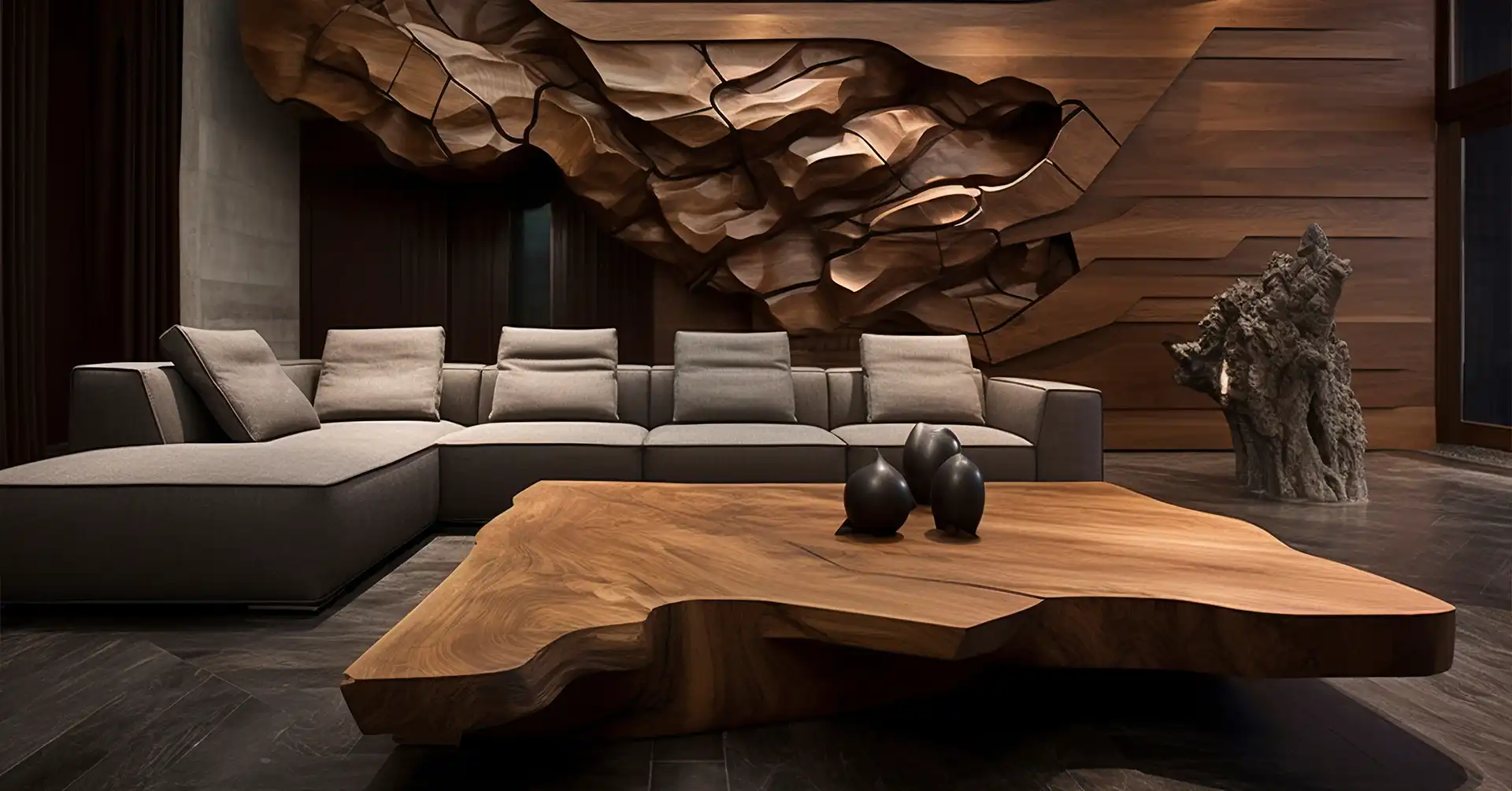Hello, my wonderful readers! Termites on wood can be a homeowner’s nightmare, causing extensive damage to furniture and wooden structures. These silent invaders work stealthily, often causing irreversible harm before their presence is even detected. In this comprehensive blog, we will delve into the world of termite infestations on wood and explore effective strategies to remove them from your cherished furniture.
Understanding the signs of a termite infestation is crucial for early intervention. From mud tubes on walls to the telltale signs of wood damage, we will equip you with the knowledge needed to identify and tackle these wood-munching pests. Beyond merely recognizing the problem, we’ll guide you through the intricacies of termite behavior, shedding light on their life cycle and habits.
Our blog will showcase a variety of proven methods for termite removal, ranging from DIY solutions to professional interventions. Whether you prefer natural remedies or commercially available treatments, we’ve got you covered. We’ll also discuss preventive measures to safeguard your furniture from future termite attacks, ensuring the longevity of your wooden possessions.
Join us on this informative journey as we empower you with the knowledge and tools to bid farewell to termites and reclaim the integrity of your wooden furniture. Don’t let these tiny intruders compromise the beauty and durability of your cherished pieces – learn how to remove termites and protect your home today!
Why is there Termite On Wood?
Termites infesting wood is a persistent and damaging issue, leading homeowners to wonder, “Why is there termite on wood?” These relentless pests are drawn to wood for a multitude of reasons, primarily rooted in their biological and ecological needs.
First and foremost, termites are naturally attracted to cellulose, a key component of wood. Cellulose serves as their primary food source, making wooden structures, furniture, and even paper products susceptible targets. This intrinsic affinity for cellulose is deeply ingrained in the termite’s biology, driving them to seek out and devour wood for sustenance.
Environmental factors also play a crucial role in attracting termites to wood. Moisture-rich environments are particularly appealing to these pests, as they thrive in damp conditions. Wood that is consistently exposed to moisture due to leaks, poor ventilation, or improper drainage becomes an ideal breeding ground for termites. The dampness not only softens the wood, making it easier for termites to feed on, but also provides a conducive environment for termite colonies to establish and expand.
Additionally, termites are adept at exploiting cracks and crevices in wood, gaining access to the interior where they can establish colonies unnoticed. The concealment and protection offered by wood provide an ideal environment for termites to carry out their destructive activities without immediate detection.
In essence, the presence of termites on wood is a result of their biological inclination towards cellulose, coupled with environmental conditions that create a welcoming habitat for these relentless pests. Understanding these factors is crucial for implementing effective prevention and intervention strategies to safeguard your wooden structures from termite infestations.
Why are there Termite On Wood?
Termites infesting wood is a pervasive issue that prompts the question: “Why are there termites on wood?” The presence of these destructive insects on wooden structures is primarily driven by a combination of biological, environmental, and structural factors.
Termites are naturally attracted to wood due to its cellulose content, a vital component of their diet. This biological inclination compels termites to seek out and consume wood as a primary source of sustenance. The complex digestive systems of termites have evolved to efficiently break down cellulose, making wood an ideal food source for these pests.
Environmental conditions also play a significant role in attracting termites to wood. Moisture-laden environments create an appealing habitat for termites, as they thrive in damp conditions. Wood consistently exposed to moisture, whether due to leaks, poor ventilation, or inadequate drainage, becomes more susceptible to termite infestation. The dampness not only softens the wood, making it easier for termites to feed on but also provides an environment conducive to establishing and expanding termite colonies.
Furthermore, termites exploit vulnerabilities in wooden structures, gaining access through cracks, crevices, or gaps. The concealed and protected interiors of wood offer an ideal setting for termites to establish colonies and carry out their destructive activities without immediate detection.
In summary, the presence of termites on wood is a consequence of their biological attraction to cellulose, coupled with environmental factors that create favorable conditions for infestation. Recognizing these factors is crucial for implementing effective preventative measures and interventions to protect wooden structures from the relentless onslaught of termites.
How to Get Rid of Termites? | Termite On Wood
Getting rid of termites is a crucial task for homeowners faced with the relentless threat of these destructive pests. Taking proactive measures and employing effective strategies is essential to protect your property. Here’s a detailed guide on how to get rid of termites:
Identify the Infestation:
Begin by thoroughly inspecting your property for signs of termite activity. Look for mud tubes on walls, damaged wood, or discarded wings near windowsills. Identifying the extent of the infestation is crucial for determining the appropriate course of action.
Choose the Right Treatment Method:
There are various treatment options available for termite eradication. These include:
Liquid Termiticides: Applied to the soil around the foundation, forming a barrier to prevent termite entry.
Termite Baits: Placed strategically around the property, attracting termites who then carry the bait back to their colonies.
Foam Treatments: Injected directly into termite galleries, effectively eliminating the pests.
DIY Remedies:
Nematodes: Beneficial microscopic worms that feed on termites, available for purchase and application in affected areas.
Orange Oil: Contains compounds toxic to termites. Apply it directly to infested areas for localized treatment.
Professional Extermination:
Engage the services of a licensed pest control professional for a comprehensive and targeted approach. Professionals have access to potent termiticides and advanced techniques for effective eradication.
Preventive Measures:
Moisture Control: Address any water leaks or damp conditions that attract termites.
Wood Treatment: Apply wood preservatives or sealants to make the wood less appealing to termites.
Regular Inspections: Conduct routine checks for signs of termite activity to catch infestations early.
Structural Repairs:
Repair and replace damaged wood, addressing any structural issues that might facilitate termite entry.
Termite-Resistant Materials:
Consider using termite-resistant building materials for construction and landscaping.
Educate Yourself:
Stay informed about termite behavior, signs of infestation, and preventive measures to fortify your defenses against future attacks.
A combination of meticulous inspection, appropriate treatment methods, and preventive measures is key to successfully getting rid of termites. Whether opting for DIY solutions or seeking professional assistance, a proactive approach is essential to protect your property from the pervasive threat of termite infestations.
Conclusion | Termite On Wood
Tackling termites on wood requires a proactive and comprehensive approach to ensure the longevity of your furniture. By understanding the signs of infestation and delving into the intricate world of termite behavior, you gain a strategic advantage in the battle against these destructive pests.
Having identified the problem, the blog has equipped you with a range of effective methods for removing termites from your cherished furniture. Whether opting for natural remedies, DIY solutions, or seeking professional intervention, the key is swift and decisive action. Addressing termite infestations promptly is crucial to minimize damage and protect the structural integrity of your wooden possessions.
Furthermore, our exploration of preventive measures empowers you to fortify your defenses against future termite attacks. Moisture control, regular inspections, and the use of termite-resistant materials are integral components of a long-term strategy to safeguard your furniture.
Remember, the battle against termites is an ongoing process. Stay vigilant, educate yourself on termite prevention, and implement these strategies consistently to create an inhospitable environment for these wood-munching invaders.
By applying the knowledge gained from this blog, you are not only removing termites from your furniture but also taking proactive steps to prevent future infestations. Your commitment to these measures ensures that your wooden possessions remain resilient and free from the damaging effects of termite activity. With diligence and the right tools, you can reclaim and preserve the beauty of your furniture for years to come.
Also Read:






